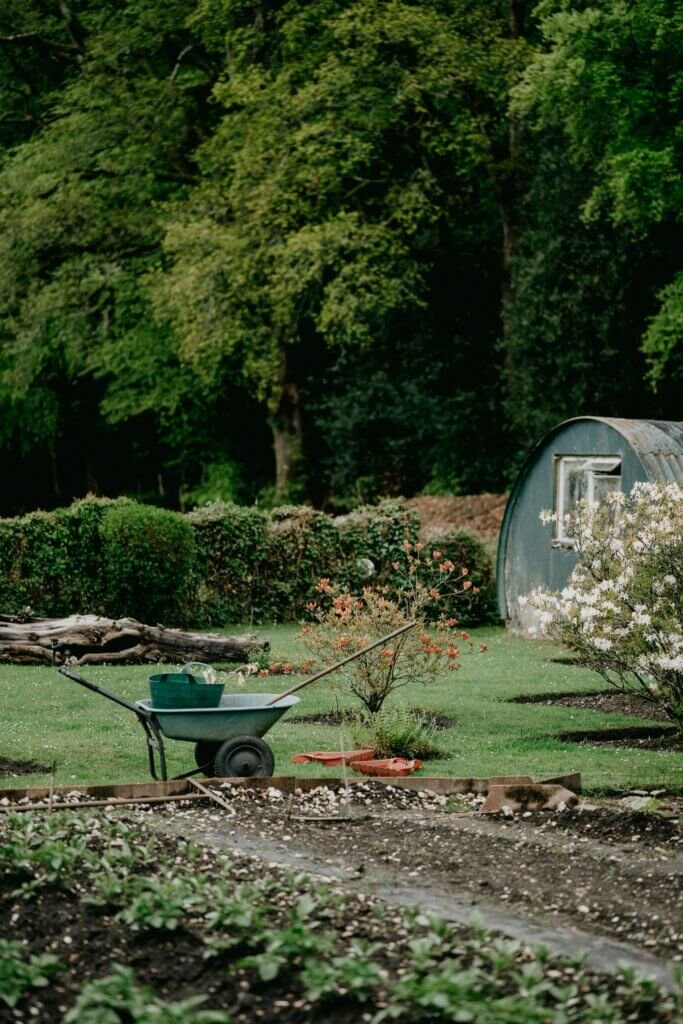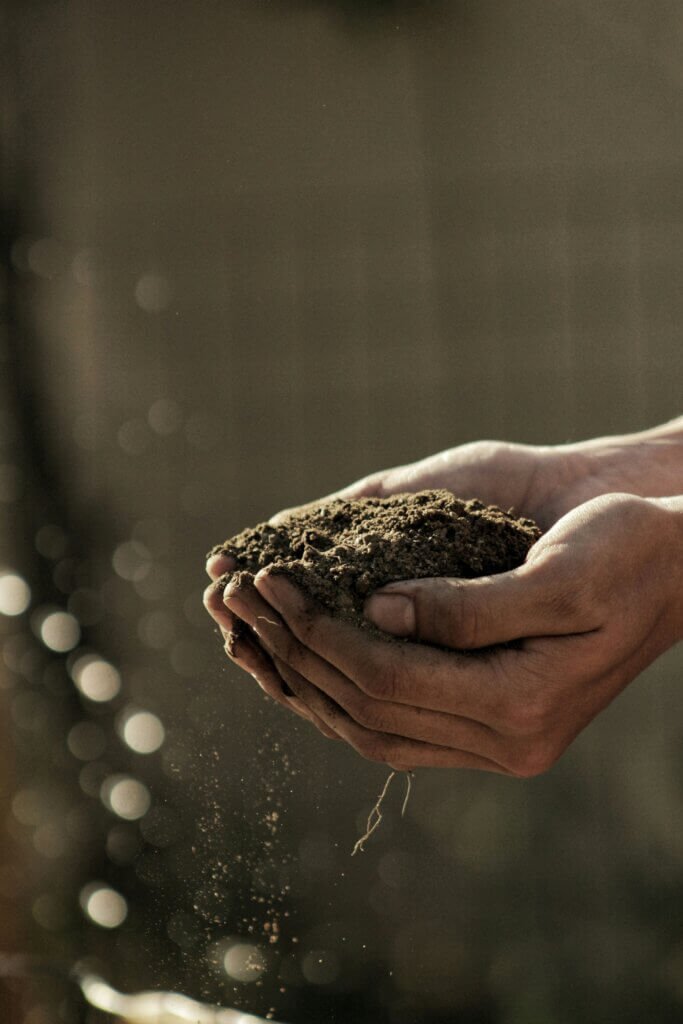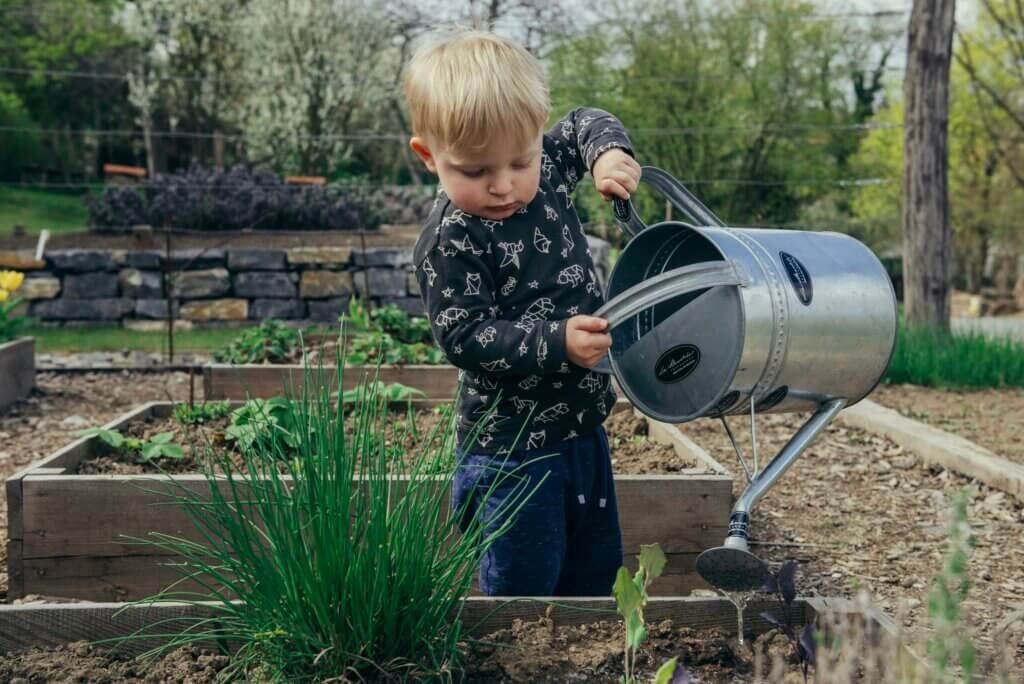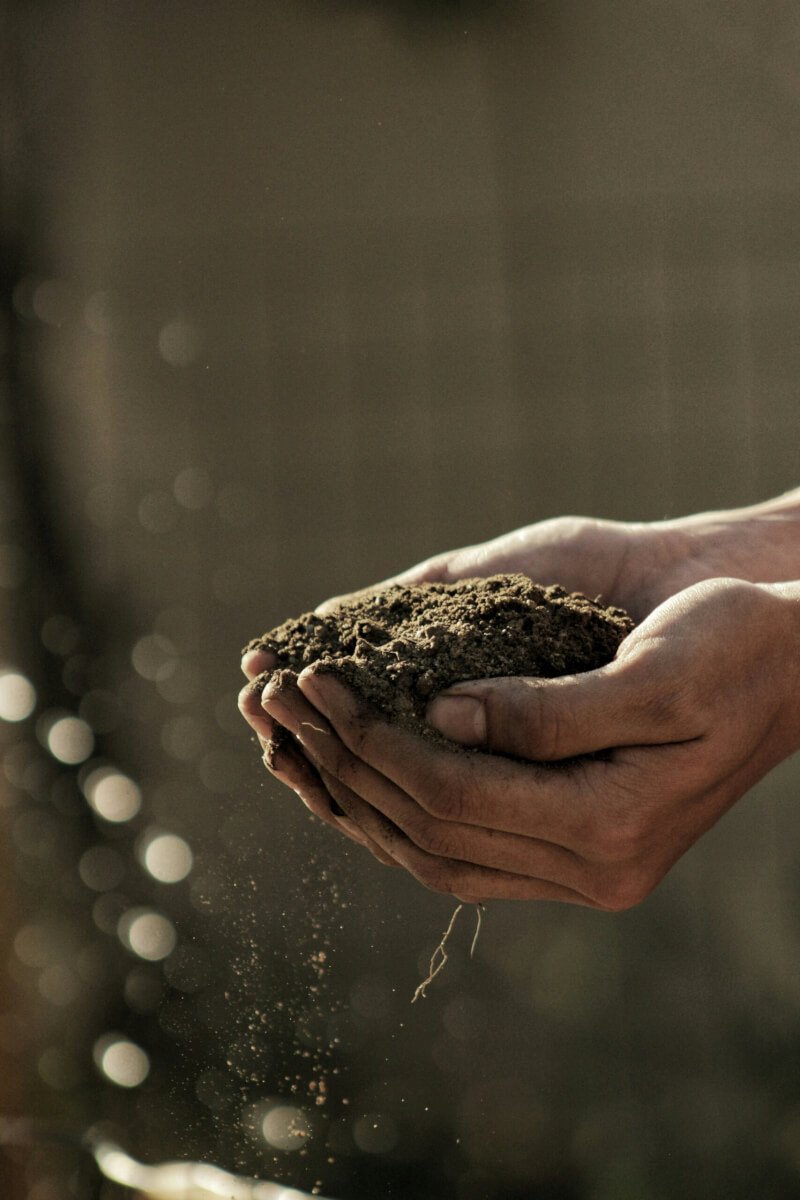If you’re a plant lover who lives in a small urban space, you might feel limited when it comes to maintaining and pruning your plants. But fear not! In this article, we’ll share the top 5 tips for pruning plants in small urban spaces. Whether you have a balcony, a tiny backyard, or even just a few potted plants, these tips will help you keep your greenery looking beautiful and healthy. So grab your shears and get ready to transform your small urban oasis into a thriving mini garden. Let’s dive right in!

Choose the Right Plants
Consider the size and growth habit of the plant
When it comes to choosing plants for small urban spaces, it is essential to consider the size and growth habit of the plant. You want to select plants that will fit well within the limited space available without overcrowding or overpowering the area. Consider the mature size of the plant and ensure that it will not outgrow its allocated space. Opt for slow-growing or compact varieties that will maintain an appropriate size throughout their life span.
Choose plants that are suitable for small spaces
Not all plants are suitable for small urban spaces. Some plants have extensive root systems that can cause damage to infrastructure or become invasive in confined areas. It is crucial to choose plants that have shallow root systems or are known to be less aggressive in their growth habits. Additionally, select plants that have a compact or upright growth habit rather than spreading or sprawling ones. This will help ensure that your plants don’t take up excessive space or encroach on neighboring areas.
Look for plants that require minimal pruning
In small urban spaces, it is ideal to choose plants that require minimal pruning. Too much pruning can be time-consuming and can disrupt the natural shape and growth of the plants. Opt for plants that naturally have a neat and compact form, reducing the need for excessive pruning to maintain their shape. The less time you have to spend on pruning, the more time you can enjoy your plants and the overall beauty of your urban garden.
Consider the maintenance requirements of the plant
Before selecting plants for your small urban space, consider the maintenance requirements of each plant. Some plants may have specific needs that require regular attention, such as frequent watering, fertilizing, or pest control measures. While these plants can still be suitable for small spaces, it is crucial to consider whether you have the time and resources to meet their maintenance needs. Choose plants that fit well with your available time and energy, ensuring that you can provide them with the care they require to thrive.
Understand Pruning Basics
Know when to prune
Knowing when to prune your plants is an essential aspect of successful pruning. Different plants have different pruning requirements, and pruning at the wrong time can harm the plants or disrupt their growth cycles. Generally, the best time to prune is during the plant’s dormant season, which is usually in late winter or early spring. However, some plants, like roses, require specific pruning times. It is essential to research and understand the specific pruning needs of your plants to ensure you prune them at the right time and promote healthy growth.
Understand different pruning techniques
Pruning involves several different techniques, and understanding these techniques will help you achieve the desired results. The most common pruning techniques include heading back, thinning, and pinching. Heading back involves cutting back the main stems to encourage branching, while thinning entails removing specific branches to improve airflow and shape. Pinching involves simply removing the tips of new growth to encourage bushiness. Each plant may require a specific technique or a combination of techniques, so it is vital to research and understand the best practices for each plant species you have.
Learn about the specific pruning needs of different plants
Different plants have unique pruning needs, and it is essential to familiarize yourself with these requirements. Some plants may require regular pruning to maintain their shape and size, while others may need minimal pruning or only for specific purposes like removing dead or diseased branches. Research the specific pruning needs of your plants to ensure you provide them with the proper care. Understanding the growth habit and natural form of each plant will help you make informed decisions about when and how to prune.
Use the right tools for pruning
Using the right tools for pruning is essential to achieve clean and effective cuts. Invest in quality pruning tools such as bypass pruners, loppers, and pruning saws. Bypass pruners are suitable for smaller branches, while loppers and pruning saws are necessary for larger branches. Make sure your tools are sharp and clean to prevent damage or disease transmission. Using the right tools will not only make pruning easier but also minimize the stress on the plants and promote healthy regrowth.
Create a Pruning Schedule
Develop a schedule based on the growth rate of plants
Developing a pruning schedule based on the growth rate of your plants will help you stay organized and ensure timely pruning. Some plants may require pruning every year, while others may only need it every few years. Consider the specific growth rate of each plant and create a schedule accordingly. Plants that grow quickly may need more frequent pruning to maintain their desired shape and prevent overcrowding, whereas slow-growing plants may only require occasional pruning for maintenance purposes.
Consider the specific needs of each plant
While developing a pruning schedule, it is crucial to consider the specific needs of each plant. Some plants may have certain times of the year when they are more susceptible to disease or pests, making it necessary to prune them before or after those periods. Additionally, certain plants may flower on old wood, requiring pruning after they bloom. Take into account these specific needs when creating your schedule to ensure that pruning does not interfere with the plants’ natural growth cycles or ability to produce flowers.
Remember to prune during the correct season
Pruning during the correct season is crucial for the overall health and growth of your plants. As mentioned earlier, most plants benefit from pruning during their dormant season, which is usually in late winter or early spring. Pruning at this time allows the plants to recover before their active growing season and promotes vigorous spring growth. However, there may be exceptions to this general rule, such as plants that bloom on old wood or those vulnerable to specific diseases. Always research and understand the appropriate pruning season for each plant in your urban garden.
Leave enough time for plants to recover before their active growing season
When pruning your plants, it is important to leave enough time for them to recover before their active growing season begins. Pruning can be stressful for plants, and allowing them sufficient time to heal and rejuvenate is crucial for their overall health and vitality. Avoid pruning too close to the plant’s active growing season, as this can hinder its ability to produce new growth and may result in weaker plants. Plan your pruning schedule with this consideration in mind, ensuring that the plants have enough time to recover and prepare for their next growth cycle.
Start with Dead, Diseased, or Damaged Branches
Identify dead, diseased, or damaged branches
Before beginning your pruning process, take the time to identify any dead, diseased, or damaged branches on your plants. Dead branches are easy to spot as they have no signs of life, such as buds or green foliage. Diseased branches may have discoloration, spots, or abnormal growth. Damaged branches can be caused by storms, pests, or other external factors and may show signs of splitting, tearing, or breakage. Removing these branches is essential for the overall health and appearance of your plants.
Use sharp and clean pruning tools
When removing dead, diseased, or damaged branches, it is crucial to use sharp and clean pruning tools. Dull or dirty tools can cause more harm than good, potentially introducing disease or leaving ragged cuts that are slow to heal. Ensure that your pruning tools are sharp, as clean cuts promote faster healing and minimize the risk of infection. Clean your tools with a disinfectant before and after each use to prevent the transmission of diseases between plants.
Make clean cuts to remove the branches
When removing dead, diseased, or damaged branches, it is essential to make clean cuts to minimize stress and promote healing. Use bypass pruners or pruning saws, depending on the size of the branches. Make angled cuts just above a bud or branch collar to encourage new growth and prevent decay. Avoid leaving stubs or cutting too close to the main stem, as this can hinder the plant’s ability to heal and may lead to further damage.
Dispose of the removed branches properly
Properly disposing of the removed branches is important to prevent the spread of diseases or pests. Cut the branches into smaller pieces for easy disposal or composting. If the branches were diseased, it is best to dispose of them separately from other garden waste. Check with your local guidelines for the proper disposal of green waste to ensure you follow the recommended practices and prevent any negative impact on the environment.

Thin Out the Crowded Growth
Identify branches that are crossing or rubbing against each other
Identifying branches that are crossing or rubbing against each other is crucial for thinning out crowded growth. These branches can cause friction and damage, potentially leading to wounds or disease entry points. Remove the branches that are crossing or rubbing, aiming to maintain a well-spaced and open structure within the plant. By thinning out crowded growth, you will not only improve the plant’s aesthetic appeal but also promote airflow and light penetration, reducing the risk of disease and supporting plant health.
Remove branches that are growing towards the center of the plant
In addition to removing crossing or rubbing branches, it is important to prune out branches that are growing towards the center of the plant. These inward-growing branches can create a dense and congested interior, hindering airflow and increasing the risk of disease. By selectively removing these branches, you can create a more balanced and open structure, facilitating better light penetration and air circulation throughout the plant.
Prune branches to create a balanced and open structure
Pruning branches to create a balanced and open structure is essential for the health and appearance of your plants. Aim for a natural and pleasing shape, allowing each branch to have its space and receive adequate light. Avoid over-pruning, as this can cause excessive stress to the plant and may result in stunted growth or vulnerability to pests and diseases. Regularly assess the growth of your plants and adjust pruning practices as needed to maintain a balanced and open structure.
Avoid over-pruning and causing excessive stress to the plant
While pruning is necessary for maintaining the health and shape of your plants, it is important to avoid over-pruning and causing excessive stress. Over-pruning can weaken the plant, making it more susceptible to diseases and pests. It can also disrupt the natural growth cycle and hinder the plant’s ability to produce flowers or fruit. Prune selectively and in moderation, focusing on removing dead, damaged, or crowded branches rather than indiscriminately removing foliage. By avoiding over-pruning, you will encourage healthy growth and ensure the long-term vitality of your small urban garden.
Maintain the Shape and Size of Plants
Trim branches that are growing outside the desired shape
As your plants grow, it is natural for some branches to extend beyond the desired shape. To maintain the shape and overall aesthetics of your plants, trim these branches back to the appropriate length. Use your pruning tools to make clean cuts just above a bud or branch collar, ensuring that you do not leave stubs or cut too close to the main stem. Regularly monitor the growth of your plants and trim accordingly to promote a neat and well-maintained appearance.
Prune to control the height and width of the plant
In small urban spaces, it is important to prune your plants to control their height and width. Plants that are allowed to grow unchecked can quickly become overwhelming and overpower the limited space available. Use selective pruning techniques to maintain the desired height and width of your plants, ensuring they fit well within the confines of your urban garden. Pruning can help create a more harmonious and visually appealing environment while preventing overcrowding and potential damage to surrounding structures.
Use selective pruning to maintain a natural appearance
While maintaining the shape and size of your plants is important, it is equally crucial to preserve their natural appearance. Avoid excessive or unnatural pruning that may result in an artificial or “cookie-cutter” look. Instead, opt for selective pruning techniques that respect the natural growth habit and form of each plant. By using selective pruning, you can maintain a beautiful and organic appearance while achieving your desired shape and size objectives.
Regularly monitor the growth of plants to ensure timely pruning
Regularly monitoring the growth of your plants is essential for timely pruning. Growth rates can vary depending on environmental conditions and plant health, and it is important to assess your plants regularly to determine when pruning is necessary. Look for signs of overcrowding, excessive growth, or branches that are encroaching on neighboring plants or structures. By staying vigilant and proactive in your observation, you can ensure that pruning is done at the right time, benefiting the overall health and appearance of your small urban garden.

Consider Pruning for Health and Safety
Thin out branches to improve airflow and light penetration
Pruning to thin out branches is not only beneficial for aesthetic purposes but also for the health of your plants. Dense and overcrowded growth can impede airflow and limit opportunities for light penetration, creating a favorable environment for diseases. By selectively removing branches, you can improve airflow within the plant, reducing humidity levels and minimizing the risk of fungal infections. Additionally, thinning out branches allows more sunlight to reach the lower parts of the plant, promoting better overall growth and development.
Prune to remove any potential hazards or obstacles
Safety should always be a priority when it comes to pruning in small urban spaces. Prune your plants to remove any potential hazards or obstacles that may cause accidents or hinder movement. This includes branches that may be blocking walkways, obstructing visibility, or coming into contact with structures or electrical wires. Regularly inspect your plants for any potential safety risks, and prioritize the removal of branches that pose a threat to you, your visitors, or the surrounding environment.
Promote plant health by removing overcrowded branches
Overcrowded branches can negatively impact the health of your plants by promoting the spread of diseases and pests. By selectively removing overcrowded branches, you can create better airflow and light penetration, as mentioned earlier. Improved air circulation reduces the humidity levels within the plant, making it less susceptible to fungal infections. Additionally, pruning can help remove shelters and hiding places for pests, reducing their presence and decreasing the likelihood of infestations. By promoting plant health through pruning, you can create a thriving and resilient small urban garden.
Monitor for signs of pests or diseases and take necessary pruning actions
Regular monitoring for signs of pests or diseases is crucial for the overall health of your plants. Early detection allows for timely intervention, preventing the spread and severity of potential problems. Should you notice any signs of pests or diseases, take the necessary pruning actions to limit their impact. This may include removing affected branches or foliage to prevent further spread. Additionally, pruning can help promote faster recovery and regrowth by eliminating the diseased or infested parts of the plant.
Avoid Over-Pruning and Damaging the Plants
Do not remove more than 30% of the plant’s foliage
It is important to avoid over-pruning and causing excessive damage to your plants. As a general rule of thumb, avoid removing more than 30% of the plant’s foliage during a single pruning session. Over-pruning can stress the plant and hinder its ability to recover and grow. By adhering to this guideline, you can strike a balance between maintaining the health and shape of your plants while ensuring they have enough foliage to support their growth and vitality.
Avoid excessive pruning during the active growing season
Pruning during the active growing season should be done with caution to avoid excessive stress on the plants. While some light pruning may still be necessary for maintenance purposes, major pruning should typically be reserved for the dormant season. Pruning during the active growing season can disrupt the plant’s growth cycle and interfere with its ability to produce flowers or fruit. If pruning is necessary during this time, it should be done sparingly and with a focus on removing dead or damaged branches.
Leave enough foliage to support the plant’s growth
When pruning, it is essential to leave enough foliage to support the plant’s growth. Foliage is responsible for photosynthesis, the process by which plants produce energy for their survival. Removing too much foliage can weaken the plant and impair its ability to produce the energy it needs. Ensure that you only remove what is necessary and avoid excessive pruning that may leave the plant unable to sustain itself. Strike a balance between maintaining the plant’s shape and health while providing it with sufficient foliage to thrive.
Consult professional help for challenging pruning tasks
While many pruning tasks can be accomplished by homeowners, some situations may require professional assistance. If you have large or mature trees, complex pruning needs, or concerns about the safety and stability of your plants, it is advisable to consult an arborist or a professional landscaper. These experts have the knowledge, experience, and specialized equipment to handle challenging pruning tasks safely and effectively. When in doubt, seeking professional help can ensure the best outcome for your plants and help you avoid costly mistakes.

Properly Dispose of Pruned Material
Cut branches into smaller pieces for easy disposal
When pruning your plants, it is important to properly dispose of the pruned material. Cut the branches into smaller pieces for easy handling and disposal. This will make it easier to fit the material into bags or containers and reduce the volume and weight for transportation. Smaller pieces are also more manageable for composting if appropriate for your situation.
Consider composting the pruned material if suitable
If suitable, consider composting the pruned material rather than sending it to a landfill. Composting allows for the organic material to break down naturally and becomes a valuable nutrient-rich amendment for your garden soil. However, it is essential to ensure that the pruned material is free from diseases or pests before adding it to your compost pile. Some woody materials may take longer to decompose, so consider chipping or shredding them into smaller pieces for faster breakdown.
Dispose of diseased or pest-infested branches separately
If any of the pruned branches are diseased or pest-infested, it is crucial to dispose of them separately from other garden waste. These branches may contain pathogens or pests that can harm other plants or spread throughout the environment. Contact your local waste management authorities to inquire about the appropriate disposal methods for diseased or pest-infested branches. Following these guidelines will help prevent the further spread of diseases or infestations in your small urban garden.
Follow local guidelines for the disposal of green waste
When disposing of green waste, such as pruned branches and other organic materials, it is important to follow your local guidelines. Different regions may have specific regulations or recommendations for the disposal of green waste. Some areas offer curbside pickup or have designated drop-off locations for yard waste, while others may require you to take it to a landfill or recycling facility. Familiarize yourself with the guidelines in your area to ensure you dispose of your green waste properly and in compliance with local regulations.
Regularly Monitor and Adjust Pruning Practices
Observe the growth and health of pruned plants
After pruning your plants, it is essential to regularly monitor their growth and health. Observe how they respond to the pruning and assess whether any adjustments or further pruning may be necessary. Look for signs of new growth, improved airflow, and healthier foliage. Monitoring your plants allows you to stay proactive and address any issues or concerns in a timely manner, ensuring that your pruning practices continue to benefit the overall well-being of your small urban garden.
Make adjustments to pruning techniques based on plant response
Based on the plant’s response to previous pruning efforts, make adjustments to your pruning techniques as needed. Some plants may benefit from more frequent or severe pruning, while others may require less intervention. By paying attention to how your plants grow and recover from pruning, you can refine your techniques and tailor them to the unique requirements of each plant species in your urban garden. Adaptability and responsiveness are key to achieving the desired results and maintaining the health and aesthetics of your plants.
Learn from pruning mistakes and improve over time
Don’t be discouraged by pruning mistakes that may inevitably occur during your journey as a gardener. Learning from these mistakes is a valuable opportunity to improve your pruning skills over time. Reflect on what went wrong, whether it was pruning at the wrong time, using incorrect techniques, or removing too much foliage. Each experience is a lesson that will contribute to your growth and knowledge as a gardener. Embrace the learning process and use your newfound insights to refine your pruning practices and achieve better results in the future.
Stay updated with new pruning techniques and information
The field of horticulture is constantly evolving, and new pruning techniques and information emerge regularly. Stay updated with the latest trends and research on pruning by reading books, attending workshops or seminars, and following reputable gardening resources. The more you educate yourself about pruning, the better equipped you will be to make informed decisions about your plants’ care. By staying updated, you can continue to improve your pruning skills and ensure that your small urban garden thrives with each passing season.
In conclusion, pruning plants in small urban spaces requires careful consideration and knowledge. By choosing the right plants, understanding pruning basics, creating a pruning schedule, starting with dead, diseased, or damaged branches, thinning out crowded growth, maintaining the shape and size of plants, considering pruning for health and safety, avoiding over-pruning and damaging the plants, properly disposing of pruned material, and regularly monitoring and adjusting pruning practices, you can successfully maintain a thriving and attractive small urban garden. With these top 5 tips for pruning in small urban spaces, you are well on your way to creating a beautiful and flourishing green oasis in the heart of the city.



